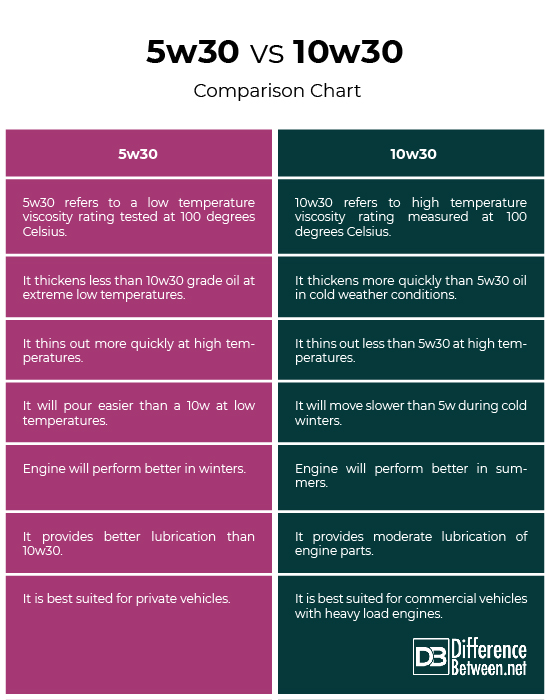Motor oil is used in engines to lubricate and cool moving parts, while transmission oil is used in transmissions to provide lubrication and prevent overheating. Both oils serve different purposes in a vehicle’s operation, ensuring optimal performance and longevity.
Understanding the distinctions between motor oil and transmission oil is crucial for proper maintenance and care of your vehicle. By knowing how each type of oil functions within the engine and transmission system, you can make informed decisions regarding maintenance schedules and fluid replacements.
Let’s delve deeper into the specific characteristics and roles of motor oil and transmission oil to enhance your understanding of these essential fluids in your vehicle.

Credit: carfromjapan.com
Introduction To Vehicle Lubrication
Motor oil and transmission oil are both essential for vehicle lubrication, but they serve different purposes. Motor oil lubricates the engine’s moving parts, reducing friction and heat, while transmission oil ensures smooth gear shifting and protects the transmission system. Understanding the difference between the two is crucial for maintaining optimal performance and prolonging the life of your vehicle.
The Role Of Fluids In Automotive Performance
In order to understand the difference between motor oil and transmission oil, it is important to first grasp the significance of vehicle lubrication. Lubricants play a crucial role in the overall performance and longevity of a vehicle. They are responsible for reducing friction, preventing wear and tear, and maintaining optimal temperature levels within the engine and transmission systems.
When it comes to vehicle lubrication, there are various fluids involved, each serving a specific purpose. Motor oil and transmission oil are two such fluids that fulfill different functions in a vehicle’s operation.
Differentiating Motor And Transmission Oils
Motor oil, also known as engine oil, is specifically designed to lubricate and cool the internal combustion engine. It circulates through the engine, providing a protective film between moving parts to minimize friction and wear. Motor oil also aids in cleaning the engine by preventing the buildup of sludge and deposits.
On the other hand, transmission oil, also called gearbox oil, serves a different purpose. It is primarily used for lubricating the transmission system, which includes the gearbox, clutch, and differential. Transmission oil helps in transferring power from the engine to the wheels smoothly, ensuring efficient gear shifting and reducing heat generated during operation.
While both motor oil and transmission oil are essential for a vehicle’s proper functioning, they have distinct characteristics and compositions tailored to their respective applications. Motor oil is typically thinner and more lubricating, as it needs to flow easily through the engine’s intricate components. Transmission oil, on the other hand, is often thicker and formulated to withstand higher temperatures and pressures found in the transmission system.
To summarize, motor oil and transmission oil are vital fluids that contribute to the overall performance and durability of a vehicle. Motor oil lubricates the engine, while transmission oil is responsible for ensuring smooth gear shifting and power transfer in the transmission system.
Diving Into Motor Oil
When it comes to understanding the intricacies of vehicle maintenance, it’s essential to have a clear grasp of the differences between motor oil and transmission oil. In this segment, we’ll dive into the world of motor oil, exploring its functions, types, and viscosities.
Functions Of Motor Oil
Motor oil plays a crucial role in lubricating the engine components, reducing friction, and preventing wear and tear. It also helps in cooling the engine by carrying heat away from critical parts, thus ensuring smooth and efficient functioning.
Types And Viscosities
Motor oils are available in various types, including conventional, synthetic, and high-mileage blends, each designed to cater to specific engine requirements. Viscosities range from thin to thick, denoted by grades such as 5W-30 or 10W-40, determining the oil’s flow at different temperatures.
Exploring Transmission Oil
Purpose Of Transmission Fluid
Transmission fluid serves several essential functions in a vehicle’s transmission system. It acts as a lubricant, ensuring smooth gear shifts and reducing friction between moving parts. Additionally, it helps to cool the transmission system and provides hydraulic pressure for gear changes.
Varieties And Specifications
Transmission fluids come in different varieties, including traditional automatic transmission fluids, manual transmission fluids, and continuously variable transmission (CVT) fluids. Each type is formulated to meet the specific requirements of different transmission systems, such as providing the appropriate viscosity and frictional properties. It’s crucial to use the correct type of transmission fluid specified by the vehicle manufacturer to ensure optimal performance and longevity of the transmission system.
Chemical Composition Contrast
Motor oil and transmission oil differ in their chemical composition. Motor oil is designed to lubricate the engine components, while transmission oil is formulated to handle the high pressures and temperatures in the transmission system. This contrast in composition is crucial for optimal performance of both engine and transmission.
When it comes to the chemical composition of motor oil and transmission oil, both have different base oils and additives. Understanding the difference between the two can help you choose the right oil for your vehicle.Base Oils And Additives In Motor Oil
Motor oil is made up of base oils and additives. The base oils used in motor oil are derived from crude oil and can be either mineral or synthetic. Mineral oils are cheaper and offer good performance, while synthetic oils are expensive and provide better performance in extreme temperatures. Additives are mixed with base oils to improve their performance. Some common additives used in motor oil include detergents, dispersants, anti-wear agents, and viscosity improvers. Detergents help to clean the engine, dispersants prevent sludge formation, anti-wear agents protect the engine, and viscosity improvers keep the oil’s viscosity stable.Unique Additives In Transmission Fluid
Transmission fluid, on the other hand, has a different set of unique additives that are not found in motor oil. These additives include friction modifiers, anti-foaming agents, and extreme pressure additives. Friction modifiers help to reduce friction between the gears, anti-foaming agents prevent the fluid from foaming, and extreme pressure additives protect the gears from wear and tear. In conclusion, the chemical composition of motor oil and transmission oil is different. Motor oil is made up of base oils and additives, while transmission fluid has a unique set of additives that are not found in motor oil. It’s essential to choose the right oil for your vehicle to ensure optimal performance and longevity.Viscosity And Performance
When comparing motor oil and transmission oil, understanding the role of viscosity is crucial. Viscosity refers to a fluid’s resistance to flow, affecting both lubricants’ performance.
Importance Of Viscosity In Lubricants
Viscosity determines oil’s thickness, crucial for proper lubrication. It impacts oil flow in engine and transmission systems.
How Viscosity Affects Engine And Transmission
Correct viscosity ensures optimal lubrication, preventing metal-to-metal contact and reducing wear and tear.

Credit: www.youtube.com
Thermal Properties And Degradation
Motor oil and transmission oil have different thermal properties and degradation rates. Motor oil is formulated to withstand high temperatures and maintain its viscosity, while transmission oil is designed to provide better friction and wear protection. Understanding these differences is crucial for ensuring optimal performance and longevity of your vehicle’s engine and transmission.
Heat Resistance In Motor Oil
Motor oil and transmission oil both play crucial roles in the smooth operation of a vehicle’s engine and transmission, respectively. When it comes to thermal properties and degradation, however, there are some key differences between the two. Let’s explore these differences in more detail. Motor oil, being specifically formulated for engines, possesses excellent heat resistance properties. It is designed to withstand high temperatures generated by the combustion process within the engine. This heat resistance ensures that the oil maintains its lubricating properties, even under extreme operating conditions. To achieve this heat resistance, motor oil is formulated with additives that enhance its ability to dissipate heat effectively. These additives help prevent the oil from breaking down or thinning out when exposed to high temperatures for extended periods. As a result, the engine remains adequately lubricated, reducing friction and wear on critical components.Transmission Fluid And Temperature Control
Transmission fluid, on the other hand, serves a different purpose and therefore requires different thermal properties. While motor oil primarily focuses on lubrication, transmission fluid also plays a vital role in temperature control within the transmission system. Transmissions generate a significant amount of heat during operation, especially in automatic transmissions that rely on fluid to transfer power between gears. To ensure optimal performance and prevent damage, transmission fluid must have excellent thermal stability and the ability to regulate temperature effectively. Transmission fluid contains additives that enable it to withstand the high temperatures generated by the transmission system. These additives help prevent overheating by dissipating heat and maintaining a stable operating temperature. By controlling temperature, transmission fluid ensures smooth shifting, prolongs the life of transmission components, and prevents premature wear and tear. In conclusion, while both motor oil and transmission oil contribute to the overall performance of a vehicle, their thermal properties and degradation characteristics differ significantly. Motor oil focuses on heat resistance to maintain lubrication in the engine, while transmission fluid emphasizes temperature control to ensure optimal transmission performance. Understanding these differences is essential for proper maintenance and maximizing the lifespan of both the engine and transmission.Maintenance And Change Intervals
Motor oil and transmission oil have different maintenance and change intervals. Motor oil should be changed more frequently, typically every 3,000 to 5,000 miles, while transmission oil can last for 30,000 to 60,000 miles before needing to be changed. It’s important to follow the manufacturer’s recommendations for each type of oil to ensure optimal performance and longevity of your vehicle.
Maintenance and Change Intervals Regular maintenance and timely oil changes are critical for the longevity and performance of your vehicle. Both motor oil and transmission oil play a vital role in lubricating and protecting the engine and transmission components. However, these two oils have different functions and properties, which require different change intervals and procedures. In this article, we will discuss the difference between motor oil and transmission oil and their maintenance and change intervals. Motor Oil Change: When and Why Motor oil is responsible for lubricating the engine components, reducing friction and heat, and preventing wear and tear. Over time, motor oil breaks down and becomes less effective in protecting the engine. Therefore, it is important to change the motor oil at regular intervals. The frequency of motor oil changes depends on several factors, such as the type of oil used, the age and mileage of the vehicle, and the driving conditions. As a general rule, most manufacturers recommend changing the motor oil every 5,000 to 7,500 miles or every six months, whichever comes first. However, if you drive in severe conditions, such as extreme temperatures, dusty roads, or stop-and-go traffic, you may need to change your oil more frequently. Signs that it’s time for an oil change include low oil pressure, unusual engine noises, or the oil change indicator light turning on. Transmission Fluid Service: Timing and Procedure Transmission fluid is responsible for lubricating the transmission components, cooling the transmission, and transferring power from the engine to the wheels. Unlike motor oil, transmission fluid doesn’t get consumed or burned by the transmission. However, it can become contaminated with dirt, debris, and metal particles over time, which can damage the transmission. Therefore, it is important to service the transmission fluid at regular intervals. The frequency of transmission fluid changes varies depending on the manufacturer and the type of transmission. As a general rule, most manufacturers recommend changing the transmission fluid every 30,000 to 60,000 miles or every two to four years, whichever comes first. However, some newer vehicles have “lifetime” transmission fluid, which doesn’t require changing, but it’s important to check the owner’s manual or consult with a professional mechanic to determine the appropriate service interval. The transmission fluid service involves draining the old fluid, replacing the filter, and refilling with new fluid. In conclusion, regular maintenance and timely oil changes are essential for the health and performance of your vehicle. By following the recommended maintenance and change intervals for both motor oil and transmission fluid, you can ensure that your car runs smoothly and efficiently for years to come.Impact On Vehicle Longevity
Motor oil is designed for lubricating the engine, while transmission oil is formulated to lubricate the transmission system. Using the right type of oil for each component is crucial for ensuring the longevity and optimal performance of your vehicle. Incorrect oil usage can lead to premature wear and potential damage to the engine or transmission.
Protecting The Engine With Proper Oil
Using the right motor oil is crucial for engine health.
Improper oil can lead to wear and tear on engine parts.
Regular oil changes prevent costly engine repairs.
Ensuring Transmission Health
Transmission oil is vital for smooth gear shifts.
Wrong oil can cause transmission failure over time.
Regular maintenance extends transmission lifespan.
Choosing The Right Lubricant For Your Vehicle
Understanding the difference between motor oil and transmission oil is crucial for proper vehicle maintenance. Each type serves a distinct purpose in keeping your vehicle running smoothly.
Consulting Manufacturer Recommendations
Refer to your vehicle’s manual for specific guidelines on the type of lubricants recommended by the manufacturer.
Learning From Professional Insights
Professional mechanics can provide valuable insights on selecting the appropriate motor oil and transmission oil for your vehicle.
Conclusion: The Integral Role Of Lubricants
Motor oil and transmission oil play integral roles in a vehicle’s performance. While motor oil lubricates the engine’s moving parts and helps to reduce friction, transmission oil is specifically designed for the transmission system, ensuring smooth gear shifts and preventing wear and tear.
Understanding the difference between these two oils is crucial for maintaining optimal vehicle performance and longevity.
Summarizing Key Differences
Motor oil and transmission oil are both lubricants, but they have different functions in a vehicle. Motor oil lubricates the engine’s moving parts, while transmission oil lubricates the gears and other components of the transmission system. Motor oil is formulated to handle high temperatures and protect against wear and tear, while transmission oil is designed to reduce friction and improve shifting performance.The Importance Of Regular Maintenance
Regular maintenance is crucial to ensure that both motor oil and transmission oil are working effectively. Over time, motor oil can break down and lose its effectiveness, which can result in damage to the engine. Similarly, transmission oil can become contaminated or lose its lubricating properties, leading to poor shifting performance or even transmission failure. By regularly checking and changing both types of oil, vehicle owners can help prevent costly repairs and extend the life of their vehicle. In conclusion, lubricants such as motor oil and transmission oil play a crucial role in the proper functioning of a vehicle. While they may seem like small components, they are essential to the overall performance and longevity of a vehicle. By understanding the key differences between motor oil and transmission oil, as well as the importance of regular maintenance, vehicle owners can help ensure that their vehicles are running smoothly and efficiently for years to come.
Credit: www.minit-tune.com
Conclusion
Understanding the distinction between motor oil and transmission oil is essential for vehicle maintenance. Choosing the right oil for each component ensures optimal performance and longevity. By knowing the specific functions and properties of these oils, you can make informed decisions to keep your vehicle running smoothly.


